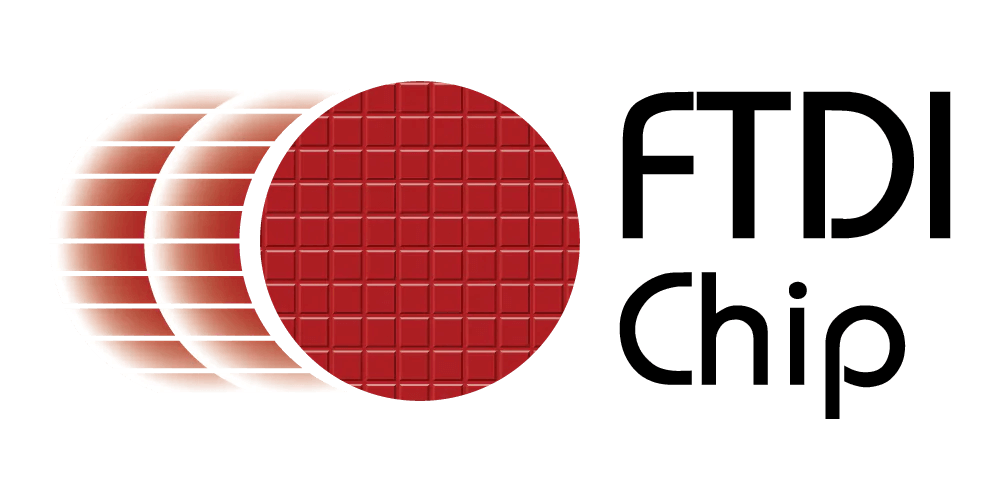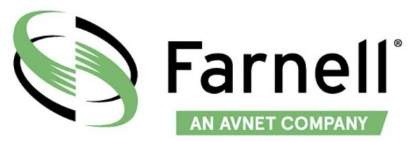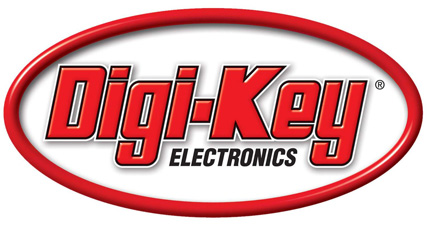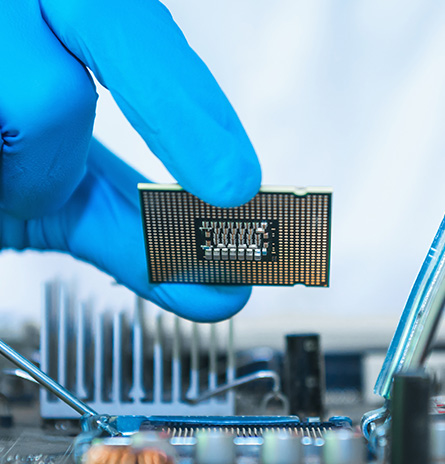Medical X-Ray Machine
A Medical X-ray Machine is a device used to generate X-rays and capture images of the inside of the body. These images help diagnose and monitor various medical conditions by providing detailed views of bones, tissues and organs. X-ray machines are commonly used in hospitals, clinics and diagnostic centers.
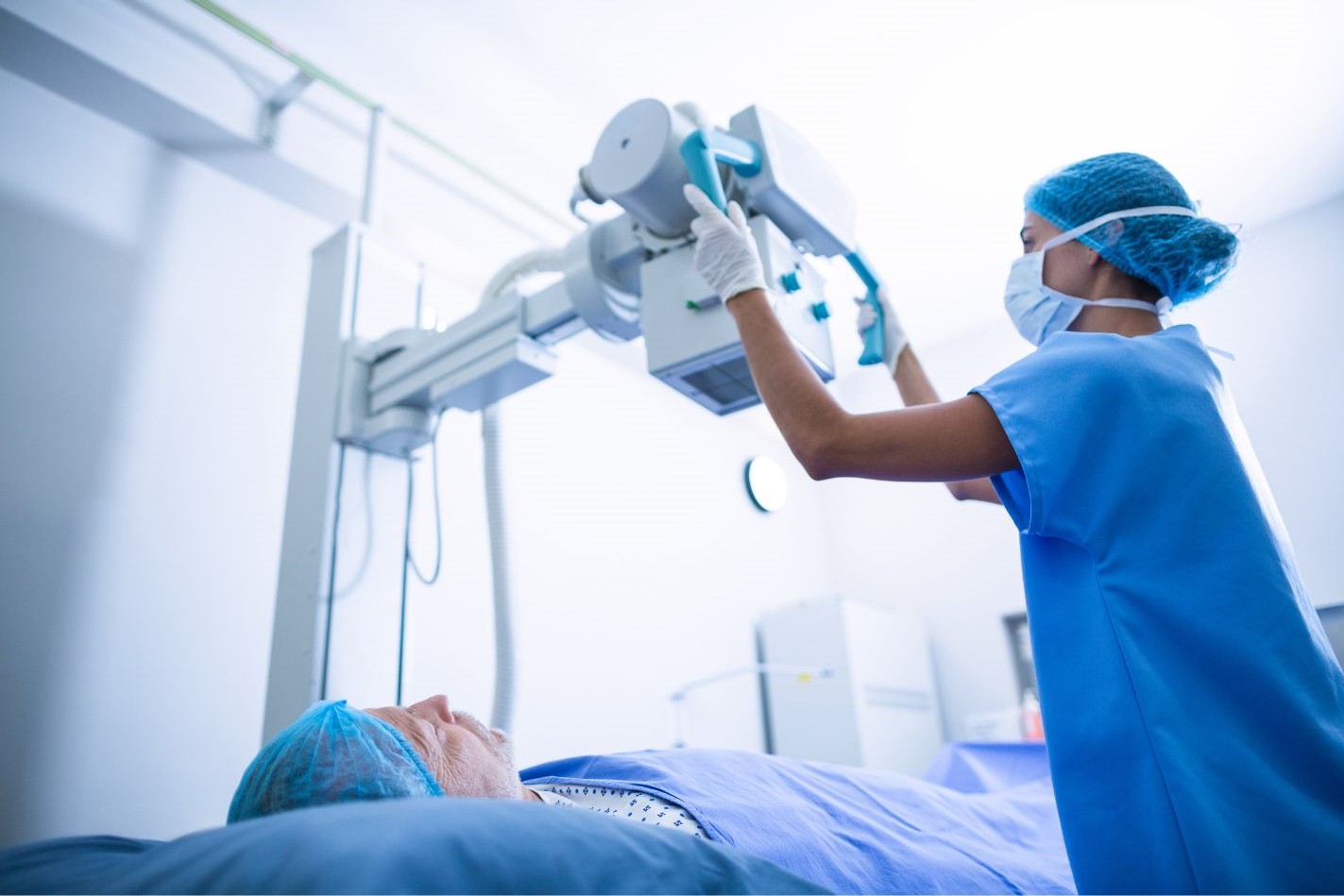
Using an FTDI USB Device with a Medical X-ray Machine
FTDI USB devices are used for serial communication over USB, providing a bridge between devices that communicate using serial protocols (such as RS-232 or UART) and modern computer systems with USB ports. In the context of a medical X-ray machine, an FTDI USB device can be used for several purposes, including:
-
- Data Transfer
Transfer images and diagnostic data from the X-ray machine to a computer system for storage, processing and analysis
-
- Remote Control and Configuration
Allow remote control and configuration of the X-ray machine settings, such as exposure time, intensity and image capture settings
-
- Maintenance and Diagnostics
Perform remote diagnostics and maintenance by communicating with the X-ray machine to retrieve status logs and error messages
Example Application: Remote Control and Data Transfer
A radiology department wants to remotely control their X-ray machine and transfer captured images to a central computer system for storage and analysis. This setup enables radiologists to adjust machine settings and view images without being physically present in the X-ray room.
Key components are:
-
- Medical X-ray Machine
Equipped with a serial interface for communication
-
- FTDI USB-to-Serial Adapter
To bridge the X-ray machine’s serial interface with a USB port on a computer
-
- Computer System
Running software to control the X-ray machine and receive image data
-
- Control and Imaging Software
Custom or commercial software designed to interface with the X-ray machine and handle image processing and storage
FTDI products can be integrated into various applications to allow for:
-
- Port expansion
- USB charging
- USB connectivity to phone or PC
- Data download
- Synchronization to application software either on PC or system with USB Host
- Firmware updates
- Configuration and more!
FTDI IC’s have the following key features making it an ideal candidate for the application:
-
- USB Full / High / SuperSpeed connectivity depending on the application requirements
- Multiple data interfaces including UART, RS232, RS485, RS222, SPI, I2C, FIFO and GPIO
- Entire USB protocol handled on the chip. No USB specific firmware programming required.
- EEPROM for customization
- Data transfer rates (up to): UART (12Mbaud), SPI (52.8Mbps), I2C (6.66Mbit/s), FIFO (40MBps for USB2.0 and 400MB/s for USB3.0)
- Integrated receive and transmit buffers for high data throughput
- FTDI’s royalty-free drivers eliminate the requirement for USB driver development in most cases
- Battery Charger Detection which may be used by mobile devices to detect the presence of a charger on the USB port to enable higher current / faster charging of batteries
- Low operating current and USB suspend current
- Extended operating temperature range: -40°C to 85°C (Industrial), -40°C to +105°C (Automotive)
- Available in various compact Pb-free from as small as 12 Pin DFN package (RoHS compliant)!
The block diagram below shows at a high level how FTDI’s IC can be integrated into the application.
The USB port of the application can be connected to a phone, PC, tablet or embedded processor. The application software controls the FTDI IC which may be connected to a processor inside the application and communicates via one of the supported protocols (UART, RS232, RS485, RS222, SPI, I2C, FIFO and GPIO). This could allow for configuration, data download, firmware updates, etc.
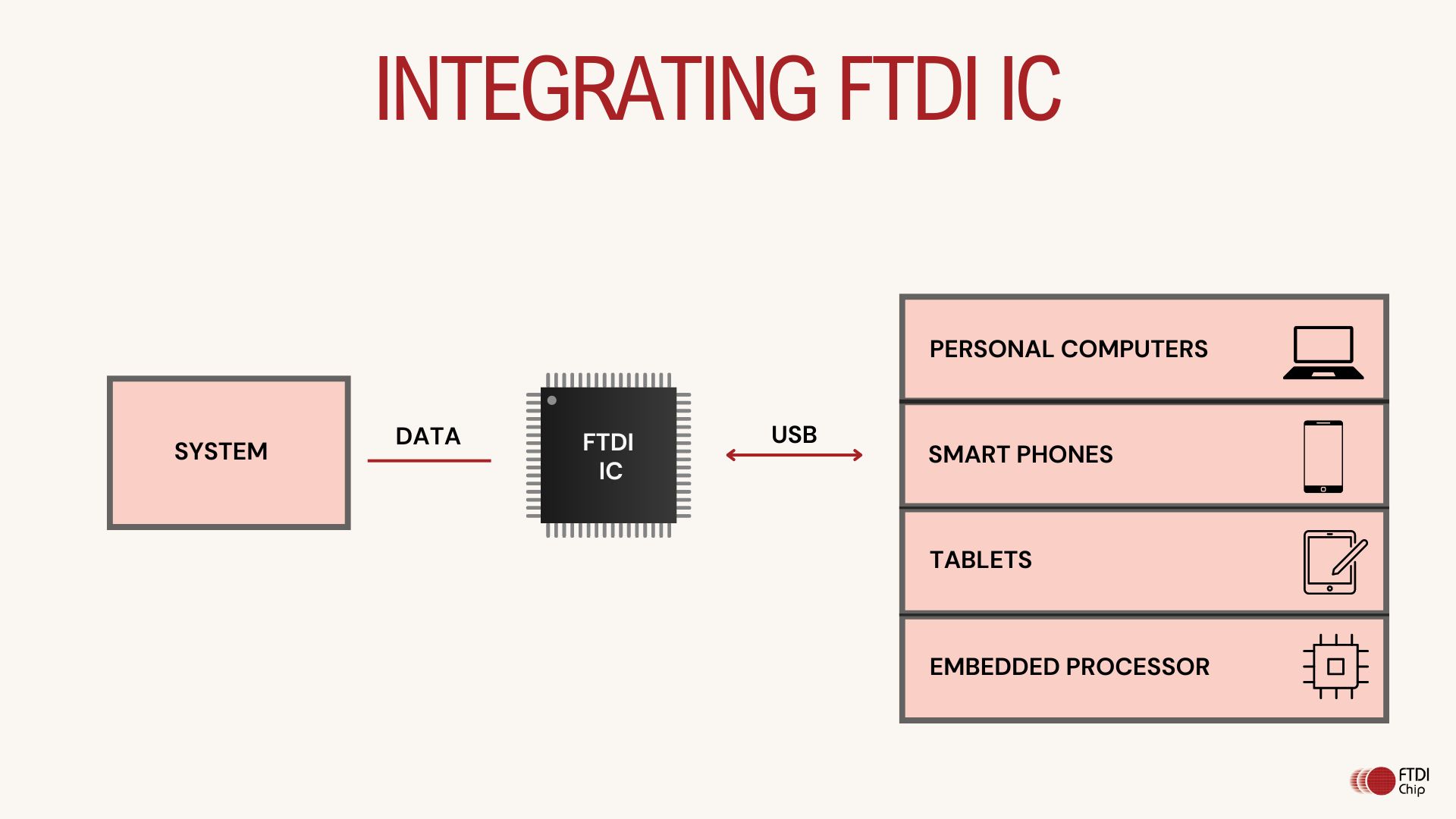
Another typical use case to integrate FTDI ICs into the application is to host the FTDI ICs with an MCU or embedded system which has a USB Host Controller allowing for port expansion and other various communications paths:
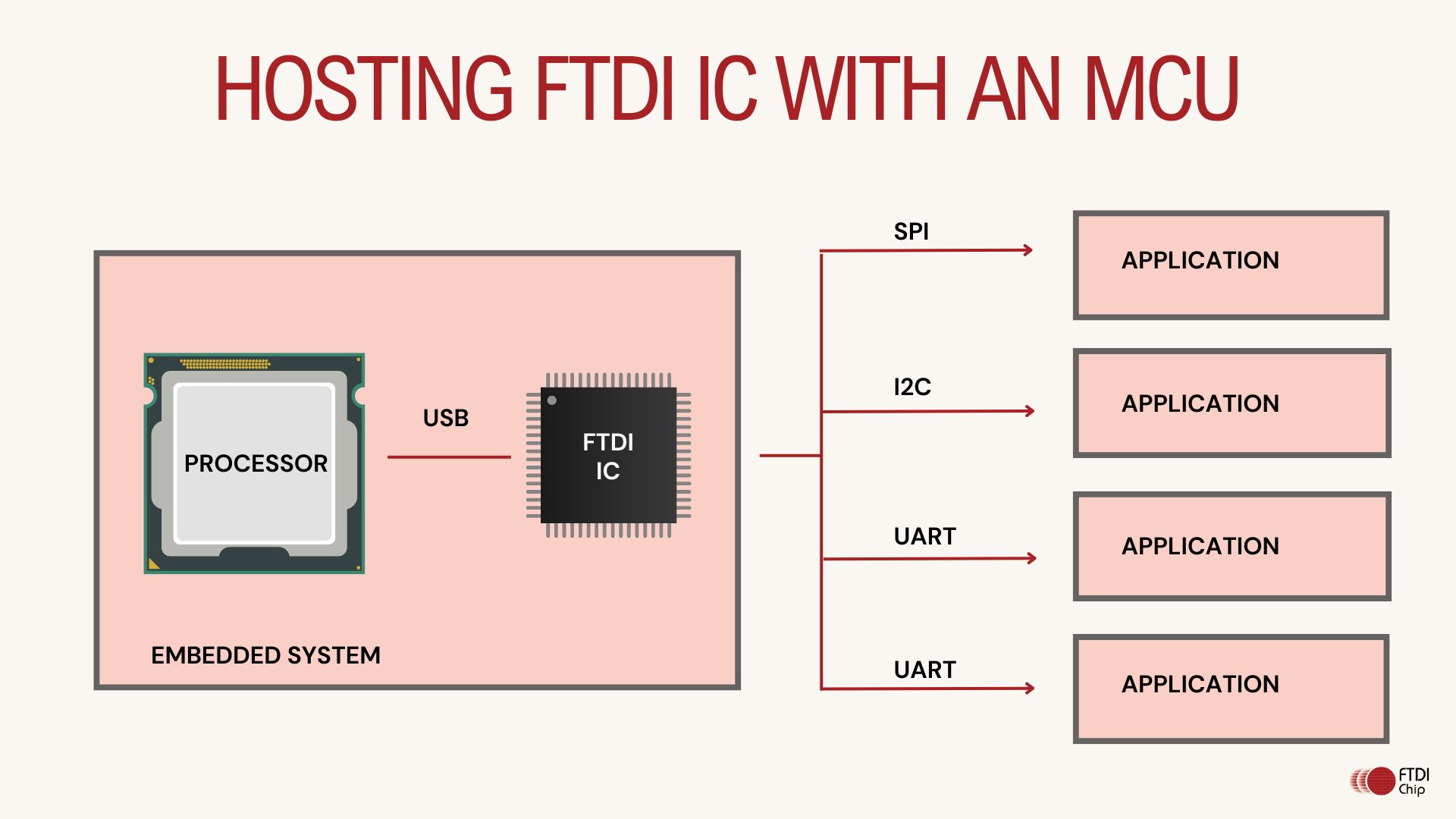
Recommended ICs:
